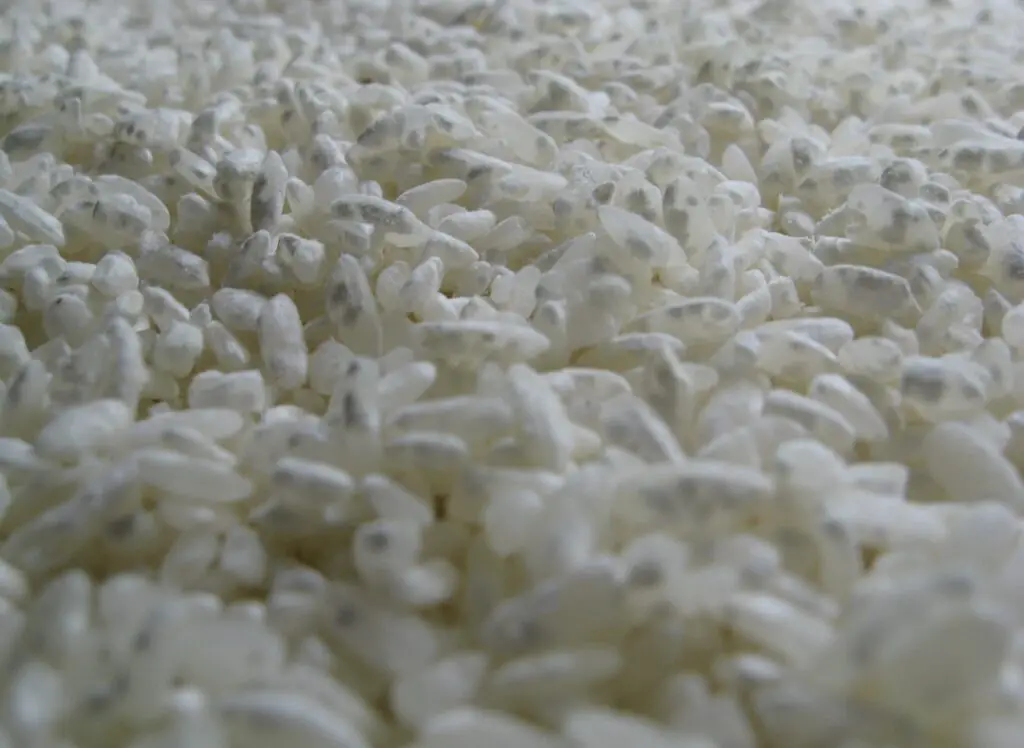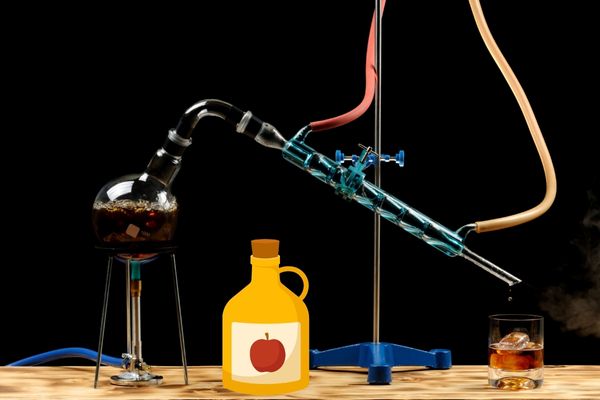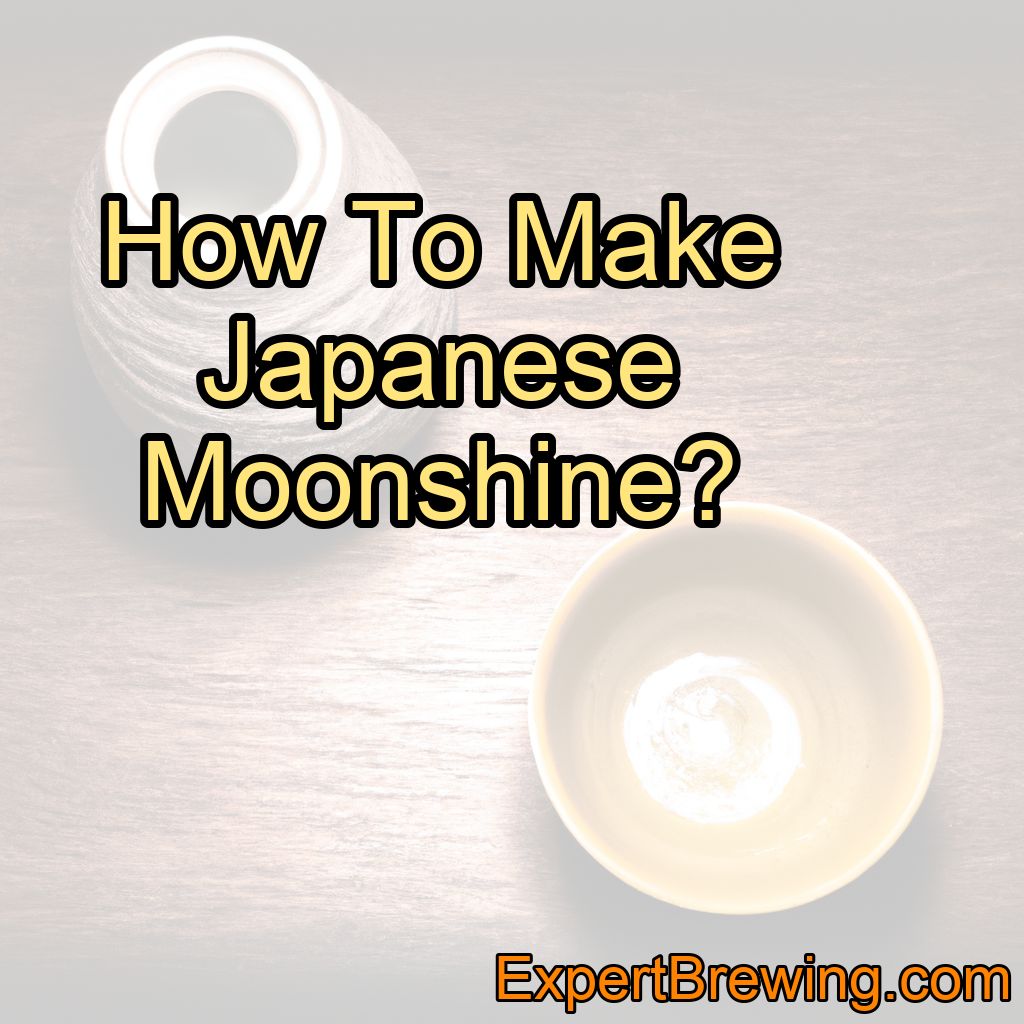As an experienced brewer, I have spent years experimenting with various methods, ingredients, and techniques to create unique and flavorful spirits.
One of my favorite homemade creations is Japanese moonshine, also known as “shōchū” (焼酎) or “doburoku” (どぶろく).
This traditional Japanese distilled beverage, typically made from rice, barley, or sweet potatoes, has a rich history and unique taste that sets it apart from other spirits.
In this blog post, I will guide you through the process of making your own Japanese moonshine at home, sharing my personal experiences and tips to help you create a delicious and authentic product.
The History of Japanese Moonshine
Before diving into the process of making Japanese moonshine, it’s important to understand its history and cultural significance.

Japanese moonshine dates back to the 15th century and has played a crucial role in Japanese society for centuries. Often consumed during religious ceremonies, festivals, and social gatherings, shōchū has become a symbol of Japanese tradition and community.
Many regions in Japan have their own unique variations of shōchū, with each area using local ingredients to create distinct flavors and characteristics. This has led to a diverse range of moonshine styles, from the sweet and fruity flavors of Okinawan Awamori to the earthy and robust taste of Kyushu’s Satsuma Shōchū.
Is shōchū a type of sake?
No, shōchū is not a type of sake. While both shōchū and sake are traditional alcoholic beverages from Japan, they are distinct and produced through different methods.
Sake, also known as Japanese rice wine, is made from fermented rice, water, yeast, and sometimes a mold called koji. The fermentation process converts the starches in the rice into sugars and then into alcohol, resulting in a beverage with a mild and distinct flavor profile.

On the other hand, shōchū is a distilled spirit that can be made from various ingredients, including barley, sweet potatoes, rice, or buckwheat. The production process of shōchū involves fermentation and then distillation, which leads to a higher alcohol content compared to sake.
Both sake and shōchū are popular alcoholic beverages in Japan, and they have their unique characteristics and regional variations. Sake is more widely known internationally, but shōchū is gaining popularity as well. It’s important to note the difference between the two to appreciate their unique qualities and flavors.
Ingredients
To make traditional Japanese moonshine, you will need a few key ingredients:
1. Koji (麹): This is a mold used to convert starches in the chosen base ingredient (rice, barley, or sweet potatoes) into sugars that can be fermented. Koji is crucial for creating Sake and the unique and complex flavors found in Japanese moonshine.
2. Base Ingredient: As mentioned earlier, rice, barley, and sweet potatoes are the most common base ingredients used in making shōchū. Each ingredient will create a different flavor profile, so choose one that appeals to your taste preferences.
3. Yeast: This is used to ferment the sugars in the mash, converting them into alcohol. There are many different types of yeast available, but it’s best to use a strain specifically designed for shōchū or sake production to achieve the desired flavor profile.
4. Water: High-quality water is essential for creating a smooth and clean-tasting moonshine. Use filtered or spring water whenever possible.
Equipment
To make Japanese moonshine, you will need some basic brewing equipment:
1. Fermentation Vessel: A large, food-grade container with a tight-fitting lid is necessary for the fermentation process. A 5-gallon bucket works well for this purpose.
2. Airlock: This device allows carbon dioxide to escape during fermentation while preventing oxygen and contaminants from entering the vessel. Airlocks can be purchased at your local homebrew store or online.
3. Distillation Apparatus: A simple pot still is sufficient for distilling your Japanese moonshine. You can either purchase a pre-made still or build your own using readily available materials.
4. Hydrometer and Thermometer: These tools are essential for monitoring the progress of your fermentation and ensuring a successful distillation process.
5. Mash Paddle: A long-handled spoon or paddle is necessary for stirring your mash during the koji and yeast inoculation steps.
The Process
Now that you have your ingredients and equipment, let’s dive into the process of making Japanese moonshine.
Step 1: Preparing the Base Ingredient
The first step in making Japanese moonshine is to prepare your chosen base ingredient. For rice-based shōchū, you’ll need to rinse and soak the rice for several hours before steaming it (do not boil!).
If you’re using barley or sweet potatoes, you’ll need to cook them until they are soft and easily mashed.
Step 2: Inoculating with Koji
Once your base ingredient is prepared, it’s time to inoculate it with koji. This step is crucial for converting the starches in your base ingredient into fermentable sugars.
Mix the koji with your cooked base ingredient and let the mixture sit for 36-48 hours at room temperature, stirring occasionally to ensure even koji distribution.

Step 3: Adding Yeast
After the koji has had time to work its magic, it’s time to add your yeast. Mix the yeast into the mash, ensuring that it is well distributed. Seal your fermentation vessel with an airlock and let the mixture ferment at room temperature for 7-10 days.
Step 4: Distillation
Once fermentation is complete, it’s time to distill your Japanese moonshine. Transfer the fermented mash to your still and heat it slowly, collecting the distilled spirit as it comes off the still. Be sure to discard the first few ounces of distillate, known as the “foreshots,” as they can contain harmful compounds.

Step 5: Aging and Enjoying
After distillation, your Japanese moonshine can be enjoyed right away or aged for additional flavor development. To age your moonshine, transfer it to a clean, airtight container and store it in a cool, dark place for several months to a year.
Conclusion
Making Japanese moonshine is a rewarding and enjoyable process that allows you to create a unique and flavorful spirit from the comfort of your own home.
By following these steps and using high-quality ingredients and equipment, you can produce an authentic and delicious shōchū that pays homage to the rich history and tradition of Japanese distilling.
To summarize, here are 9 key facts about Japanese moonshine:
1. Japanese moonshine, or shōchū, dates back to the 15th century.
2. Shōchū is an important part of Japanese culture and is often consumed at festivals and social gatherings.
3. There are many regional variations of shōchū, each with its own unique flavor profile.
4. Koji is a crucial ingredient in shōchū production, responsible for converting starches into fermentable sugars.
5. Rice, barley, and sweet potatoes are the most common base ingredients for shōchū.
6. Using a yeast strain specifically designed for shōchū or sake production is essential for achieving the desired flavor profile.
7. High-quality water is crucial for creating a smooth and clean-tasting moonshine.
8. A simple pot still is sufficient for distilling Japanese moonshine at home.
9. Japanese moonshine can be enjoyed immediately after distillation or aged for additional flavor development.
FAQs
How to make Japanese Sake?
To make Japanese Sake, start by polishing the rice to remove the outer layers. Then, the rice is washed, soaked, and steamed to prepare it for fermentation. Next, koji (a type of mold) is added to convert the rice starches into sugars. The koji, steamed rice, and water are mixed together to create a mash, which is left to ferment for about a month. After fermentation, the liquid is pressed to separate the sake from the solids. Finally, the sake is pasteurized, aged, and sometimes diluted with water before bottling.
Is kuchikamizake still made?
Yes, kuchikamizake is still made today. It is a traditional Japanese sake made from saliva fermentation, where rice is chewed and mixed with enzymes from the saliva to initiate fermentation. While it is not as commonly produced as other types of sake, there are still artisans and enthusiasts who continue to make kuchikamizake for its cultural and historical significance.
What is the best alcohol to make moonshine?
The best alcohol to make moonshine is typically a high-proof neutral spirit, such as grain alcohol or vodka. These spirits have a low flavor profile and can be easily distilled to achieve a higher alcohol content, which is essential for moonshine production.
How long does it take to make kuchikamizake?
The traditional process of making kuchikamizake typically takes around 3-4 weeks. However, it may vary depending on factors such as temperature and desired flavor profile.
What do you mix to make moonshine?
To make moonshine, you typically mix a fermented mash of grains, such as corn, barley, or wheat, with water and yeast. This mixture is then distilled to extract the alcohol content. It is important to note that making moonshine is illegal in many countries without the proper permits and licenses.
How to make Kuchikamizake?
Kuchikamizake is a traditional Japanese sake made from fermented rice using saliva enzymes. To make it, first, chew steamed rice to break it down into a paste, then spit it into a container. Leave the container covered for a few days to allow fermentation to occur. Afterward, strain the liquid from the solid residue and let it ferment further in a sealed container for a few weeks. The resulting liquid can be enjoyed as Kuchikamizake.




